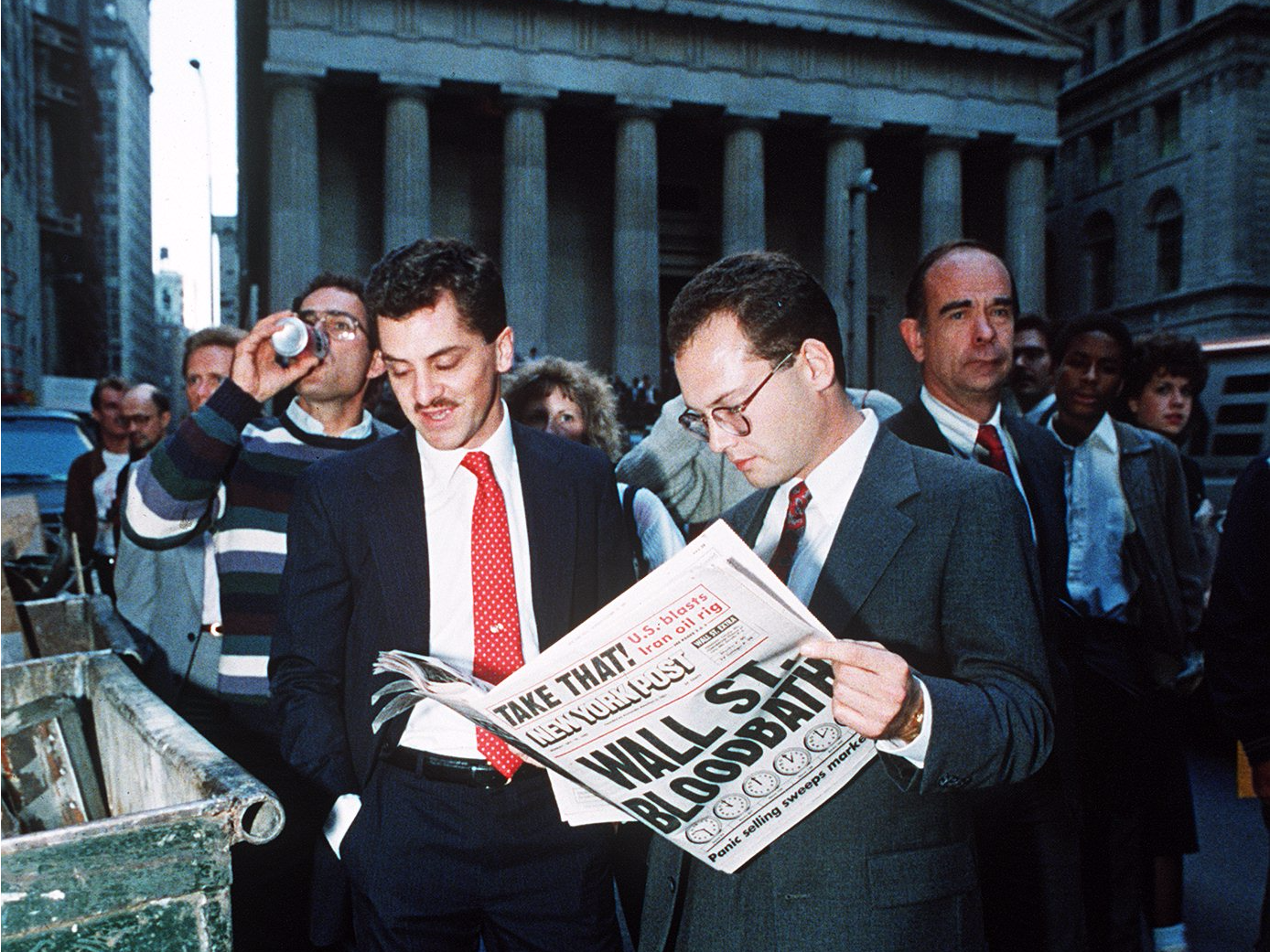 Outside the New York Stock Exchange on October 20, 1987.AP Images
Outside the New York Stock Exchange on October 20, 1987.AP Images
- The stock market got its first taste of some volatility in a while this week.
- That’s not something to be worried about yet, according to Michael Arone, the chief investment strategist at State Street Global Advisors, which manages $2.8 trillion in assets.
- He’s watching the frequency of corrections, credit spreads, and real interest rates as indicators that the stock market is under duress.
The stock market just got its first dose of volatility in a while.
Before this week, the benchmark S&P 500 index achieved more all-time highs in just the first month of 2018 than it did throughout the entire decade of the 2000s. But Monday and Tuesday brought the steepest drops in at least six months.
By Wednesday, futures trading indicated that stocks were making a strong rebound, helped in part by Boeing’s solid earnings. And so, this may not have been the big drop that several analysts have been warning about.
“In the grand scheme of things I just view this as some normal volatility for markets that’s been absent for a while,” said Michael Arone, the chief investment strategist at the $2.8 trillion investor State Street Global Advisors.
“Investors are rightly pausing to take a break after a strong period in which volatility has been very low and assets have been supported by low rates, low inflation, easy monetary policy.”
Although those conditions haven’t changed, Arone says he’s watching three indicators for signs that the market is under stress.
The first signal would be an increase in the number of corrections, which Wall Street has informally defined as declines of up to 10%, and in some cases, 5%.
One market stat that investors have recently cited a lot, and which Arone mentioned, is the number of days the stock market has gone without a 5% one-day drop. It’s now over 400 days, extending the longest stretch dating back to at least 1929.
The second signal Arone’s watching is a widening of credit spreads in high-yield and investment-grade corporate bonds to show stresses in those markets.
High-yield bonds, offered by companies with the riskiest credit profiles, still offer the lowest premiums relative to Treasury yields since the financial crisis, according to data compiled by Bloomberg. Spreads widened in 2014, but that was largely contained to distress in the energy sector as oil prices tumbled. That low premium for risky debt is an indicator of how much risk investors have been willing to take.
The third signal that would concern Arone is a pickup in real interest rates, above the rate of inflation. But should incoming Federal Reserve Chairman Jerome Powell be as cautious as his predecessor, that’s unlikely to happen over the next year.
“What will move us from expansion to contraction is inflation,” Arone said. “It often causes the Fed to aggressively raise interest rates and ultimately they end up curtailing the expansion prematurely. That is one of the things that the market is fearful of right now. I think those fears are overstated, but that’s one of the anxieties reflected in the last couple of days’ action.”













